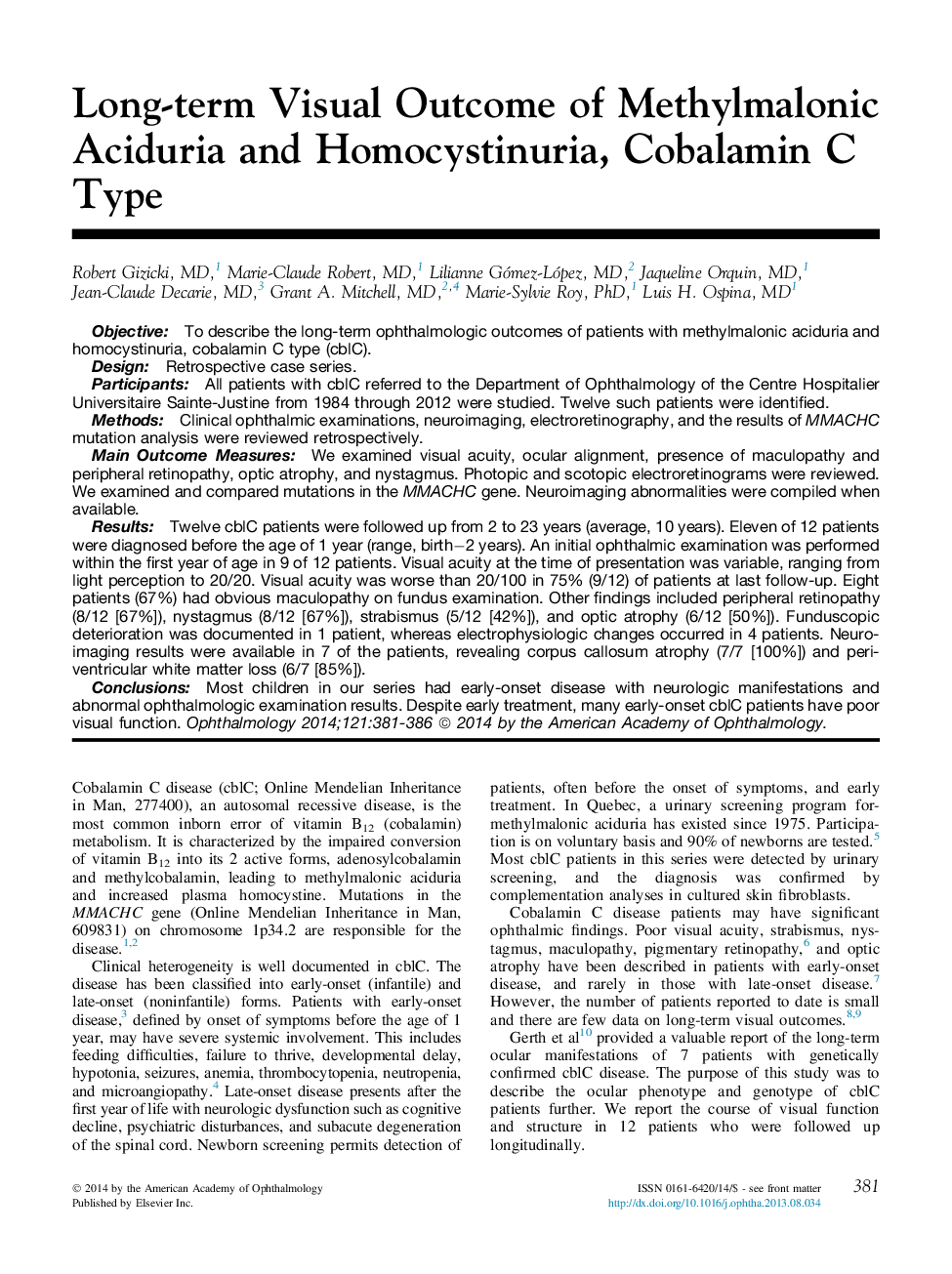| Article ID | Journal | Published Year | Pages | File Type |
|---|---|---|---|---|
| 4025962 | Ophthalmology | 2014 | 6 Pages |
ObjectiveTo describe the long-term ophthalmologic outcomes of patients with methylmalonic aciduria and homocystinuria, cobalamin C type (cblC).DesignRetrospective case series.ParticipantsAll patients with cblC referred to the Department of Ophthalmology of the Centre Hospitalier Universitaire Sainte-Justine from 1984 through 2012 were studied. Twelve such patients were identified.MethodsClinical ophthalmic examinations, neuroimaging, electroretinography, and the results of MMACHC mutation analysis were reviewed retrospectively.Main Outcome MeasuresWe examined visual acuity, ocular alignment, presence of maculopathy and peripheral retinopathy, optic atrophy, and nystagmus. Photopic and scotopic electroretinograms were reviewed. We examined and compared mutations in the MMACHC gene. Neuroimaging abnormalities were compiled when available.ResultsTwelve cblC patients were followed up from 2 to 23 years (average, 10 years). Eleven of 12 patients were diagnosed before the age of 1 year (range, birth−2 years). An initial ophthalmic examination was performed within the first year of age in 9 of 12 patients. Visual acuity at the time of presentation was variable, ranging from light perception to 20/20. Visual acuity was worse than 20/100 in 75% (9/12) of patients at last follow-up. Eight patients (67%) had obvious maculopathy on fundus examination. Other findings included peripheral retinopathy (8/12 [67%]), nystagmus (8/12 [67%]), strabismus (5/12 [42%]), and optic atrophy (6/12 [50%]). Funduscopic deterioration was documented in 1 patient, whereas electrophysiologic changes occurred in 4 patients. Neuroimaging results were available in 7 of the patients, revealing corpus callosum atrophy (7/7 [100%]) and periventricular white matter loss (6/7 [85%]).ConclusionsMost children in our series had early-onset disease with neurologic manifestations and abnormal ophthalmologic examination results. Despite early treatment, many early-onset cblC patients have poor visual function.
